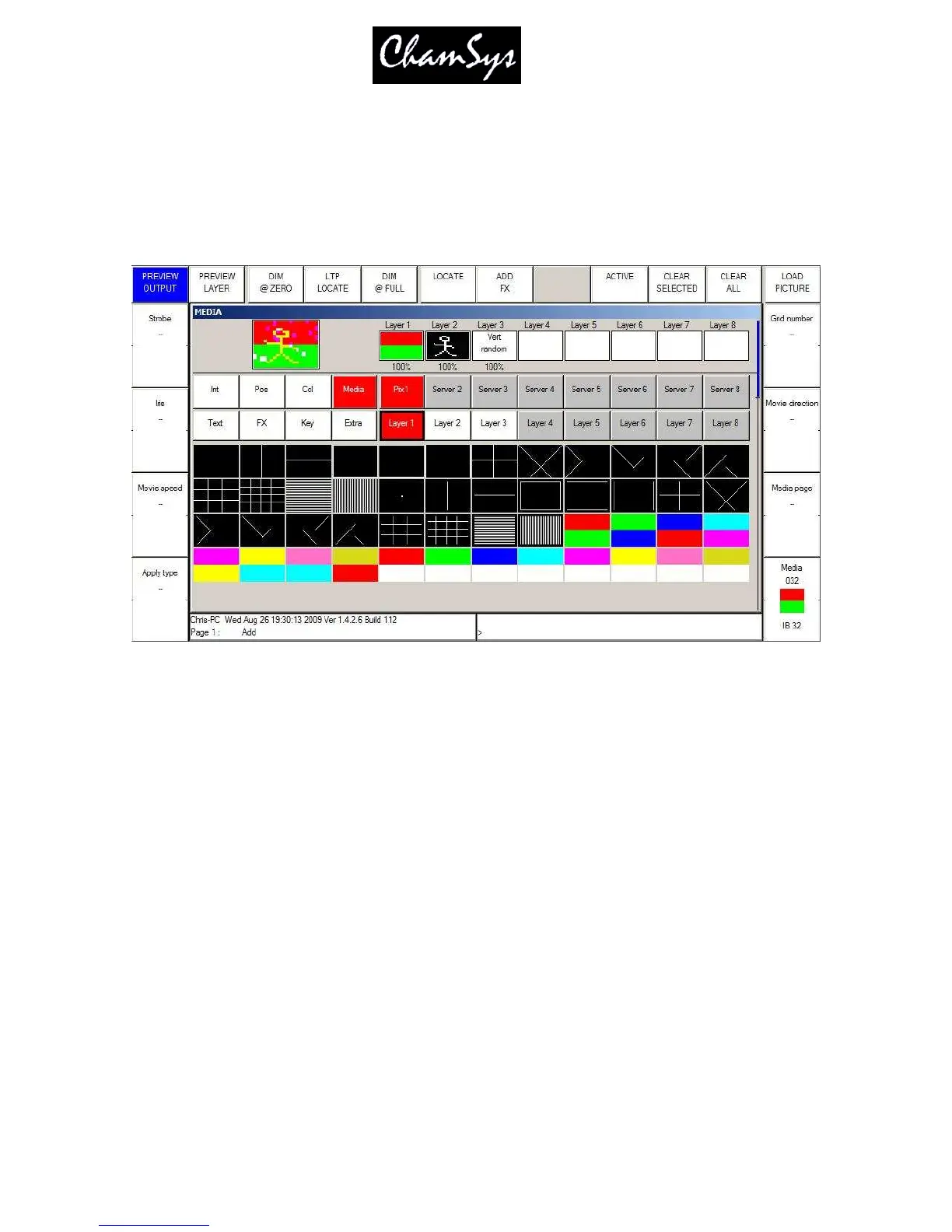ChamSys Ltd www.chamsys.co.uk
MagicQ User Manual 216 Version 1.4.9.0
25.3 Pixel Mapper
MagicQ software contains an in-built pixel mapper. From v1.4.1.4 the internal pixel mapper can be
controlled from within the Media Window. The internal pixel mapping appears as a media server just like
an external media server. When the internal Pixel Mapper is patched for a grid then MagicQ sets up the
media settings automatically so that the Pixel Mapper appears in the Media Window. In software prior to
v1.4.1.4 the pixel mapper control was from the Group, Pos, Colour and Beam Windows.
Once a grid has been designed in the Plan View of the Outputs Window, then pressing the PATCH
PIXMAP soft button automatically patches the internal pixel mapper (personality generic bitmapfx2).
MagicQ asks the user to specify the number of layers required and will patch that number of layers
(generic bitmapfx2 heads). The layers will be named according to the grid that is selected in the Outputs
Window. MagicQ uses head numbers above the other patched fixtures
When operating on a layer within the pixel mapper it will default to operating on the grid that was selected
when it was patched. MagicQ now overrides the default value for Grid Number specified in the Head
Editor for generic bitmapfx2.
MagicQ automatically adds the settings for the Pixel Mapper to the Media View of the Setup Window.
This enables the Pixel Mapper to be accessed immediately from the Media Window without further set up.
Text strings can be entered directly into the appropriate box.
25.3.1 Using Bitmaps, Movies, Text and FX on Grids
The bitmaps and text are controlled using bitmap layers – each layer is controlled like a normal moving
light – i.e. it is patched as a virtual personality. There are three virtual personalities – the original generic
bitmap.hed, generic bitmapfx2.hed with more FX and the latest generic bitmapfx2.hed with movie
support. The personality has channels to select the bitmap or text, channels for X, Y position and size,
rotate and master levels for red, green and blue. Multiple layers can be used to mix between the layers
using add, subtract, min, max or invert colour mix modes.

